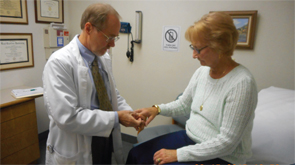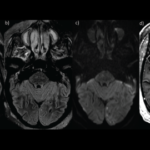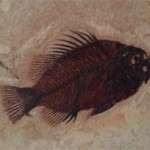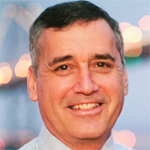
Dr. Truslow performs a routine examination of the hand of a patient with rheumatoid arthritis.
To practice rheumatology, you’ve got to love a challenge and be prepared to navigate some twists and turns before arriving at the right diagnosis. Rheumatologist and avid kayaker William Truslow, MD, says the same qualities apply to running rivers.
“The toughest part is the mental attitude—feeling that I can do this,” says Dr. Truslow, a solo practitioner based in Greensboro, N.C., about kayaking rivers ranked higher on the International Scale of River Difficulty. He says Georgia’s Tallulah Gorge and North Carolina’s Cheoah River are “some of the best I’ve dealt with. These rivers can be intimidating,” he says, “but it’s a great feeling of accomplishment when you ride them.”
He gets the same feeling of accomplishment from his clinical work when he’s able to make a tricky diagnosis for a patient.
“Whether it’s [rheumatoid arthritis] RA or lupus, it’s a good feeling when you know you will likely [help patients get] better if they will take the medicine,” says Dr. Truslow. He holds a medical degree from East Carolina University and a master’s degree in nutrition and exercise physiology from the University of North Carolina at Greensboro. “I … like the challenge of making a difficult diagnosis. In the end, I just want to give [patients] the best chance to feel better.”
Arriving at a diagnosis, particularly in rheumatology, can sometimes require a go-with-the-flow attitude, something not so foreign to a veteran kayaker. Dr. Truslow says his time spent studying Eastern medicine methods before attending medical school has also helped.
“For example, I studied at the New England School of Acupuncture [in Newton, Mass.], and you learn the yin and yang of the things that go along with Chinese medicine,” he says. “It helps with the ambiguity in rheumatology to go with the flow. You need that attitude, [for example], when it comes to lab tests. A positive test for arthritis doesn’t mean they have it.”
Taking It In
Dr. Truslow’s professional day begins with going through labs that came in overnight and readying himself for eight or nine patients before lunch. He realizes he could see more, but that’s about the number he usually feels comfortable with, given how much time he likes to spend listening to patients.
“I think the biggest thing, particularly with a new patient, is that I give them enough time to talk through what’s going on,” says Dr. Truslow. “Giving that time is an invaluable process that truly creates a bond with [patients]. I find it satisfying at the end of an office visit when a patient tells me that I was very thorough. You also can’t make assumptions.”
He will see five or six patients after lunch, and keeps it to two to three new patients a day overall. The highlight of his day, what keeps him going, is when he can determine the right diagnosis. He even finds that his knowledge of Eastern medicine can still come into play. “It’s helped in slight ways,” he says. “Frequently, the fibromyalgia trigger points are the same as meridian acupuncture points.”
Dr. Truslow attributes his individuality in rheumatology to going solo. He keeps his practice to a three-person team, counting his wife and one office worker, which makes for a comfortable flow.
“It didn’t take long for me to decide to do this myself,” he says. “It surprised a lot of people. But I have a relaxed personality, which helps me deal with the stresses that can sometimes come with running your own business.”
Natural High
The personal satisfaction he gets from kayaking helps as well. Although he admits he’s probably retired from riding some of the toughest rivers he once took on, Dr. Truslow embraces the kayak community and continues to look forward to the energy he gets from trips.
“There’s no question I feel refreshed when I come back from kayaking,” he says. “You just feel ready to tackle things. I will sea kayak on the coast some and will go on rivers, but I’ll admit I probably won’t push past the rivers that are Class III anymore.”
Dr. Truslow says he will also continue to find ways to help the nature community. He served as a past president of the Dan River Basin Association from 2006–09, and as a member of its board earlier this year. During his term as president, he led kayak trips for beginners and those more advanced to tackle Class 0 or Class I river sections. “We would have 30–40 people going, on average,” he says. “I loved watching all the people enjoy being out there and getting better.”
Helping people enjoy taking on a challenge—that sounds like the spirit of a rheumatologist.
Eric Butterman is a Texas-based freelance writer. Contact him via e-mail at ericbutterman@yahoo.com.


